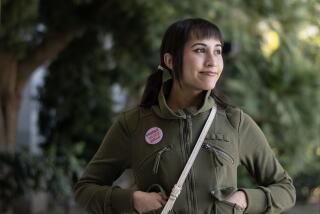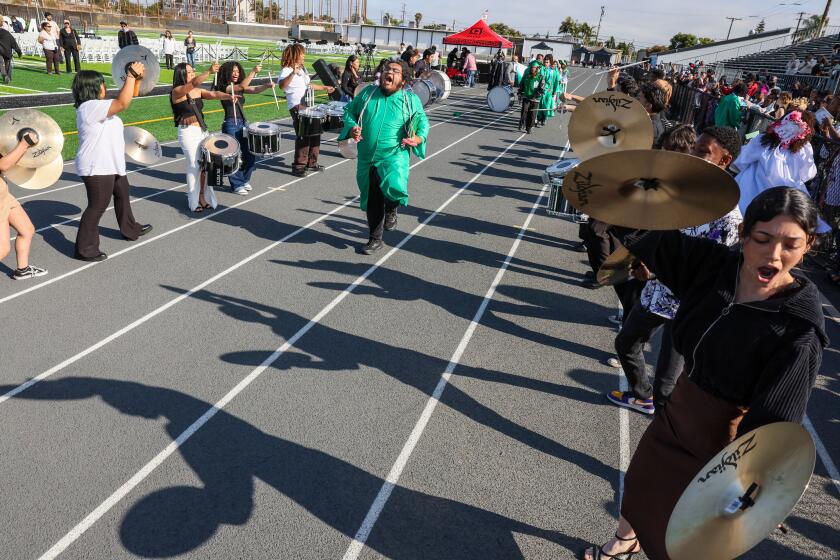Tests Reveal Children Face Threat of TB
Tuberculosis tests by county health officials have found that just over half of the schoolchildren who tested positive were born outside the United States--and could develop the disease unless treated.
But the county doesn’t have the money to test all of its schoolchildren.
“We found more positive TB skin tests than we wanted to,” said Dr. Antonino Catanzaro of the UC San Diego Medical Center. “Now we need to follow up with the skin testing programs, and then we need preventive plans. The kids aren’t a threat now, but in five to 10 years they could be contagious.”
One out of 10 people who have the tuberculosis infection can be expected to progress to the active disease at some point in their lifetime.
Tests last year on nearly 3,000 schoolchildren in five ethnically representative schools from throughout the county found 4% are infected with tuberculosis. Extrapolating from the study, officials found that 0.8% of white children in the county risk the tuberculosis infection; as do 0.3% of black children; 3.7% of Filipino children; 8.9% of Latino children; and 12.8% of Southeast Asian children.
Sixty-one of the 118 children who tested positive were born outside the United States.
The TB skin tests were given at elementary schools in El Cajon, San Ysidro, Tierrasanta, San Diego and Vista between March and June of last year under the direction of the Tuberculosis Committee of the American Lung Assn. The findings were analyzed in late January, Moser said. It is the first time that county health officials have conducted a large-scale survey of tuberculosis in the schools, Moser said.
Moser said it is unnecessary and not cost-effective to test every child in San Diego for tuberculosis because most children aren’t at high risk to contract the disease. In Los Angeles County, every schoolchild is tested for TB, but Moser said systems like that, although effective, take money away from other important health programs.
The committee has no plans to conduct further widespread TB surveys in San Diego County schools. “We need to make the system better,” Moser said. “We want to concentrate on educating all child health care providers as to our findings, because many of them see a lot of high-risk kids.”
Once children are identified as being infected with TB, they are given the antibiotic isoniazid for six months, which eliminates the tuberculosis infection, Moser said. If the child wasn’t treated, and the disease became active, it would mainly affect the lungs. The disease is transmitted through the air, such as when a person coughs.
The Department of Health Services will provide tuberculosis treatment, estimated to cost $75, to children whose families can’t afford it.
Ideally, Moser said, children should be tested for tuberculosis before they enter school. Physical examinations are required when children enter school, but TB tests aren’t always part of those physicals, and parents will sometimes sign a waiver exempting their child from the physical examination, she said.
It is nearly impossible to detect a TB infection without tests, because there are no obvious signs of illness in the infection stage, Moser said. That is why it is so important for high-risk groups to be tested, especially in California with its ethnically diverse population, she said. The rising tuberculosis rates in San Diego County are a sensitive issue, because the disease mainly strikes people of low socioeconomic status from countries where it is epidemic, and officials don’t want immigrant ethnic groups to be stigmatized.
“Once you’re in (this) . . . country, you’re here, and . . . it’s a community problem here,” Catanzaro said.
Barry Dorfman, part-time TB control officer for the California Department of Health Services, said tuberculosis is a disease of poverty that increasingly plagues children.
The national poverty level among children has risen since the early 1980s, making more children prone to the disease, Dorfman said.
Dorfman said more aggressive measures must be used to combat TB, because the rates of infection in California are expected to continue rising.
From 1985 through 1989, tuberculosis increased among all age groups in California by about 20%, Dorfman said.
In San Diego County, during that same five-year period, the average number of tuberculosis cases was 191 a year. In 1990, 346 cases were reported, said Dr. Donald Ramras of the county Department of Health Services, an increase of 81%.
Moser stressed that these numbers reflect only the cases reported to health officials. She also said that teaching parents about the disease and its treatments could slow the rising TB rate.
Karen Black, patient care coordinator at the Vista Community Clinic, said the biggest problem at the Vista Clinic, which mainly serves Latinos, is educating parents about following up on TB test results. The tuberculosis test involves a simple intradermal injection, which is read in about 48 hours. But many parents never return to the clinic or call back with results.
“If the child is sick, or appears sick, they’ll be concerned and will come in,” Black said. “It’s not that they don’t care, it’s just that they don’t have a runny nose or fever. They don’t look sick. Education is what’s needed.”
More to Read
Sign up for Essential California
The most important California stories and recommendations in your inbox every morning.
You may occasionally receive promotional content from the Los Angeles Times.






